Posts Tagged: Christmas
Extreme weather accelerates nitrate pollution in groundwater
Extreme weather spurred by climate change, including droughts and heavy rains, may increase the risk of nitrates from fertilizers ending up in groundwater, according to a recent study from researchers at the University of California, Davis. The study found heavy rains after a drought caused nitrates to seep 33 feet under farm fields in as little as 10 days. The study was published in Water Resources Research.
“The conventional wisdom was that it could take several weeks to years for nitrates to move from the crop root zones to reach groundwater,” said corresponding author Isaya Kisekka, a professor in the Departments of Land, Air and Water Resources and Biological and Agricultural Engineering. “We found these extreme events, such as California's atmospheric rivers, are going to move nitrate more quickly.”
In this study, different methods were used to measure how much nitrate, a component of nitrogen fertilizer, was seeping down through the soil in a tomato and cucumber crop near Esparto, California. Scientists conducted their research from 2021 until 2023 when California was experiencing periods of drought followed by atmospheric rivers. They measured nitrate during both the growing seasons and the rainy seasons.
Drought can leave more nitrogen in soil
Previous studies have shown about 40% of nitrogen fertilizer used for vegetables isn't absorbed by the plants but remains in the soil. During droughts, crops don't use nitrogen efficiently, leading to excess nitrogen in the soil. This study found that if a drought is then followed by heavy rainfall, that sudden burst of water causes nitrate to seep in groundwater more quickly. The nitrate concentration in the shallow groundwater exceeded the U.S. Environmental Protection Agency maximum contaminant level of 10 milligrams per liter for drinking water.
“In California, we often say we swing between droughts and floods,” said Kisekka. “These extreme events that come with climate change are going to make the risk of these chemicals ending up in our drinking water much more severe.”
Groundwater is the primary source of drinking water for most of California's Central Valley. In some regions, such as the Tulare Lake Basin, nearly one-third of drinking and irrigation wells exceed the EPA's safe nitrate level. High nitrate levels in drinking water can increase health risks, especially for young children. It may also increase the risk of colorectal cancer.
Need for real-time soil nitrate monitoring
Central Valley farmers are required to report to the Regional Water Board how much nitrogen they applied to their field and how much was removed as part of the crop's yield. The study compared different ways of monitoring when nitrate from fertilizers seep into groundwater. Kisekka said the results highlight the need for affordable, real-time soil nitrate monitoring tools to help farmers manage fertilizer use efficiently.
By using conservation practices that limit leftover nitrates in the crop's root zone after harvest, farmers can help reduce nitrate contamination in groundwater.
This study's data will also help improve a model called SWAT, which is used to track nitrate seepage into groundwater across California's Central Valley. This effort is part of the Central Valley Water Board's program to regulate irrigated farmlands.
Other UC Davis authors include Iael Raij Hoffman, Thomas Harter and Helen Dahlke.
The study was supported by the USDA Natural Resource Conservation Service through its Conservation Effects Assessment Project. The national project is designed to assess the effectiveness of conservation practices across different watersheds. The study also had support from the USDA National Institute of Food and Agriculture.
Lawn-pocalypse! Surviving Drought
Ah, summer! The season of sunburns, pool parties, and… lawn droughts. If your once lush, green carpet now looks like a crunchy brown doormat, you're not alone. Let's dive into why your yard is staging a dramatic death scene and what you can do to...

Bermuda grass and weeds overtaking drought stressed turf grass.
It's Bee-ginning to Look a Lot Like...
It's bee-ginning to look a lot like Christmas... All hail our littlest agricultural worker. European colonists brought the honey bee (Apis mellifera) to what is now the United States in 1622. Specifically, the bees arrived at the Jamestown...
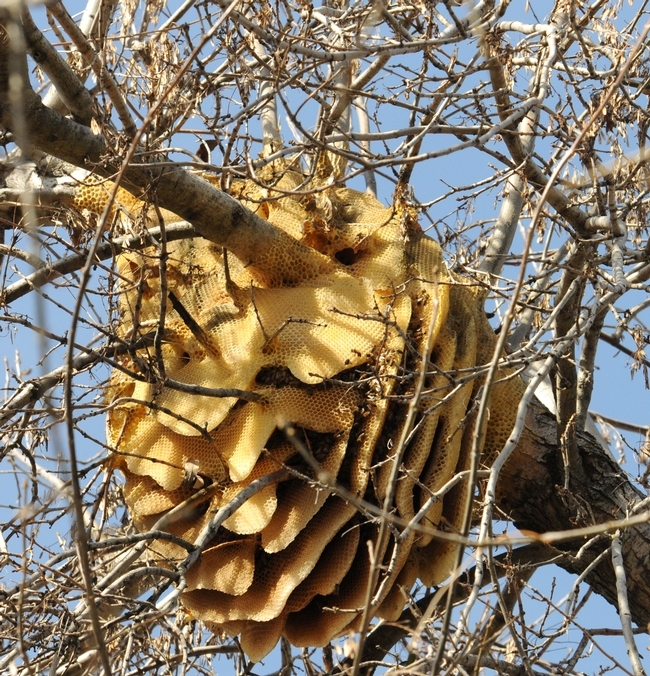
A feral honey bee colony (now gone) from a backyard in Vacavile, Calif. (Photo by Kathy Keatley Garvey)
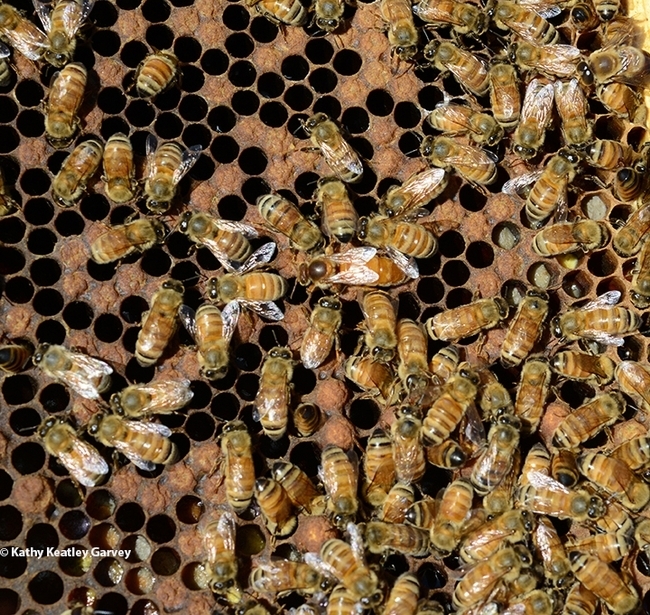
Inside a managed hive at UC Davis. (Photo by Kathy Keatley Garvey)
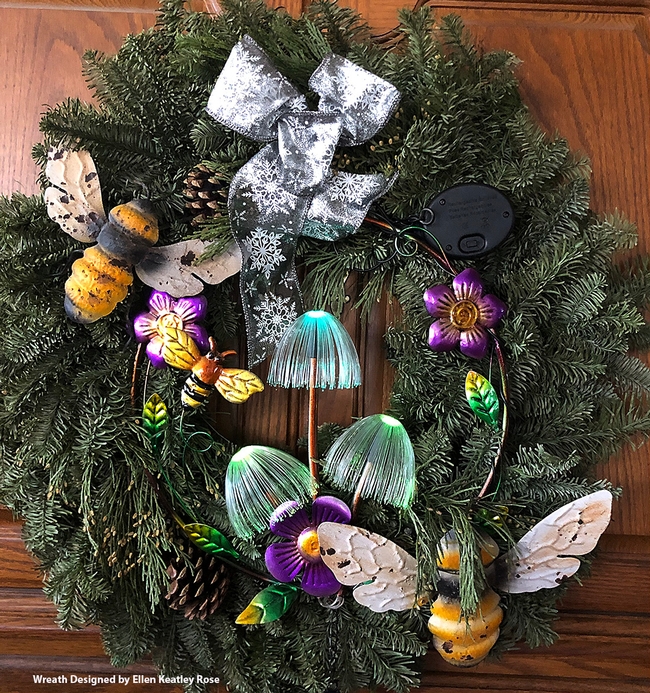
A bee-utiful Christmas wreath, designed and crafted by Ellen Keatley Rose of Castle Rock, Wash. (Photo by Kathy Keatley Garvey)
Revisiting 'The 13 Bugs of Christmas'
Back in 2010, UC Cooperative Extension apiculturist Eric Mussen (1944-2022) of the UC Davis Department of Entomology and Nematology, and yours truly, department communications specialist, wondered why no insects appear in "The Twelve Days...
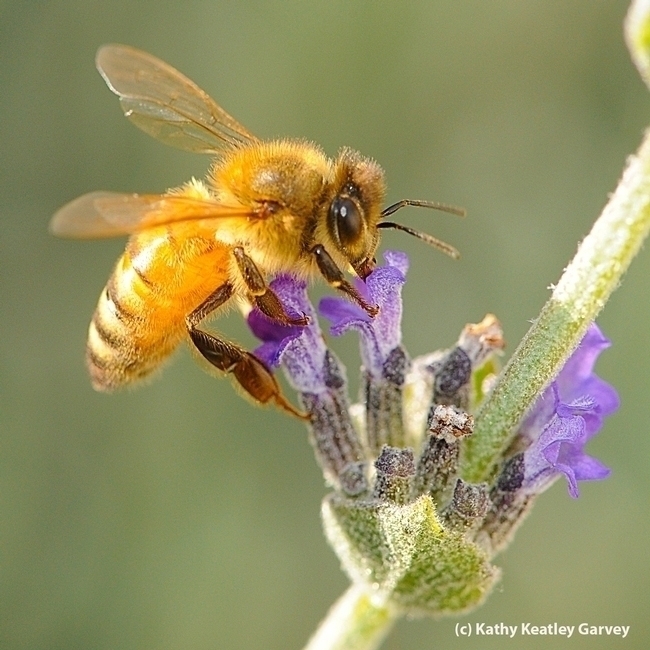
A golden honey bee, a Cordovan, nectaring in a Vacaville, Calif., garden. (Photo by Kathy Keatley Garvey)
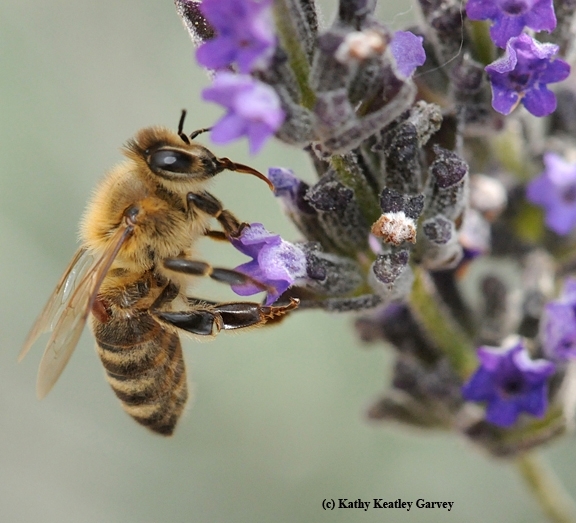
A varroa mite attached to a foraging bee in a Vacaville, Calif. garden. (Photo by Kathy Keatley Garvey)
There's a Bed Bug in My Christmas Stocking!
'Twas the night before Christmas, when all through the house Not a creature was stirring, not even a mouse.The stockings were hung by the chimney with care,In hopes that St. Nicholas soon would be there.--Clement Clarke Moore (1779-1863), 'The...
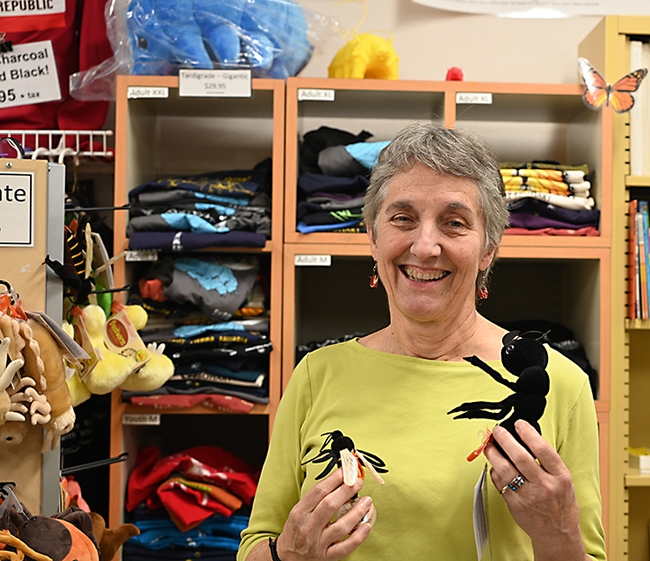
UC Davis distinguished professor Lynn Kimsey, director of the Bohart Museum of Entomology, holds some of the stocking stuffers available in the Bohart git shop. (Photo by Kathy Keatley Garvey)
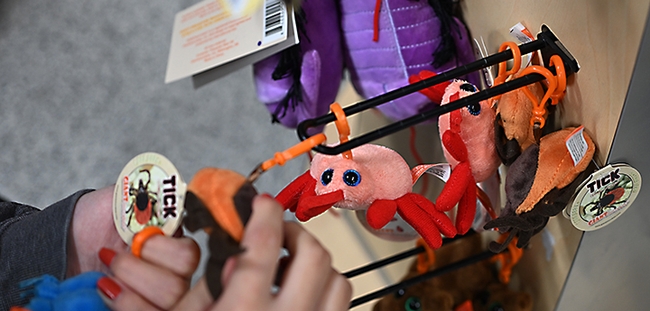
These ticks, plush toy stuffed animals, are plentiful in the Bohart Museum of Entomology gift shop. (Photo by Kathy Keatley Garvey)

